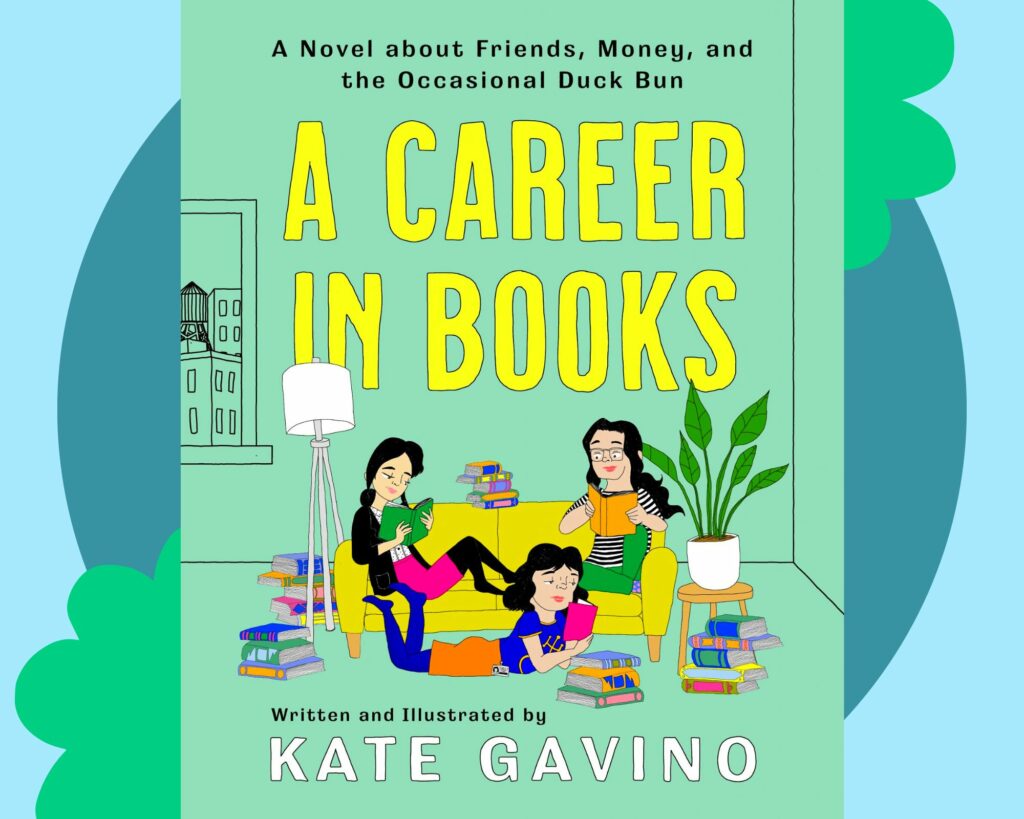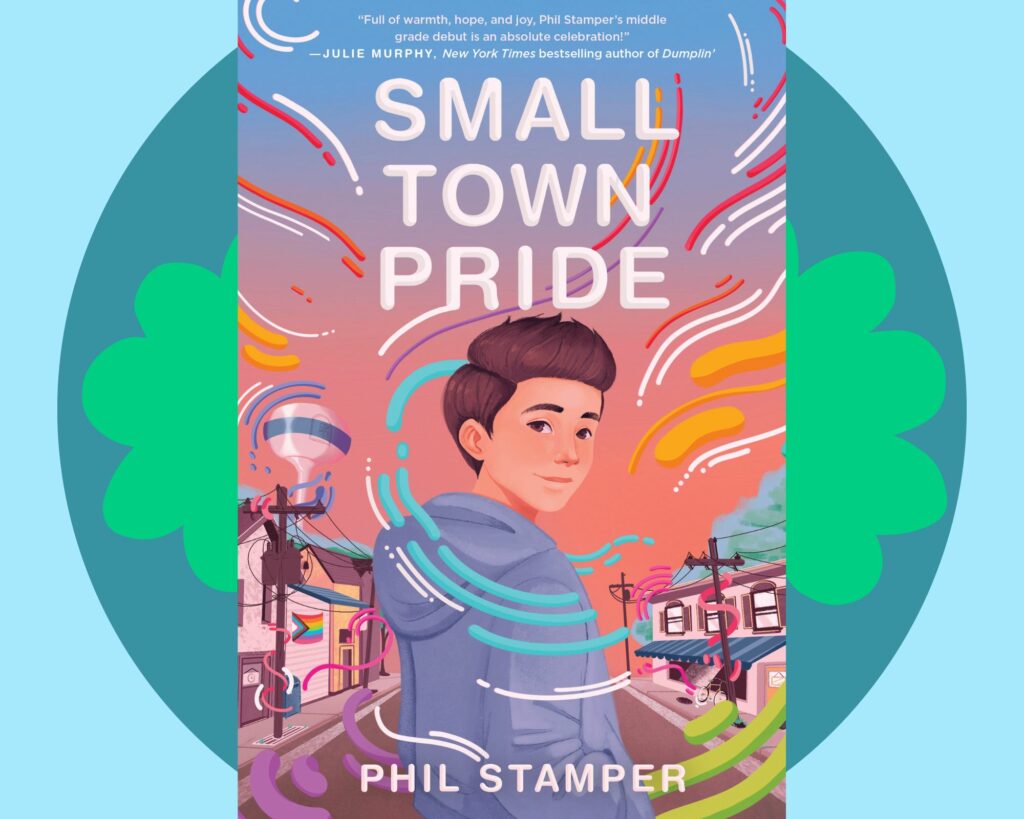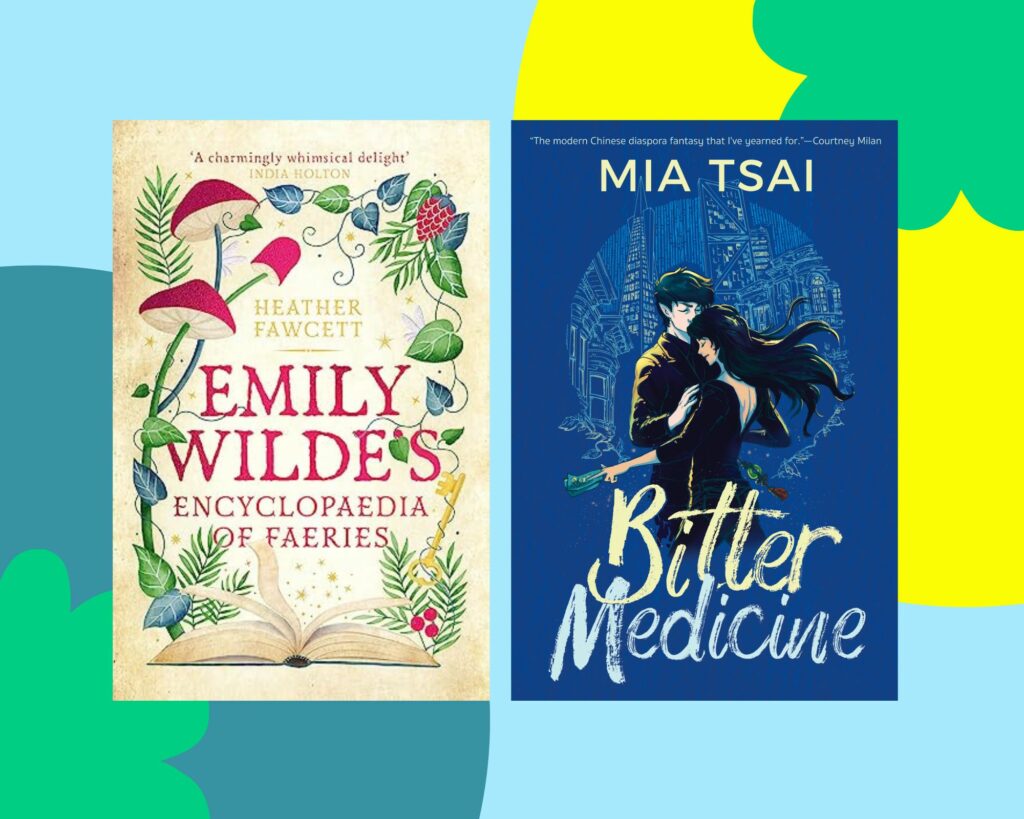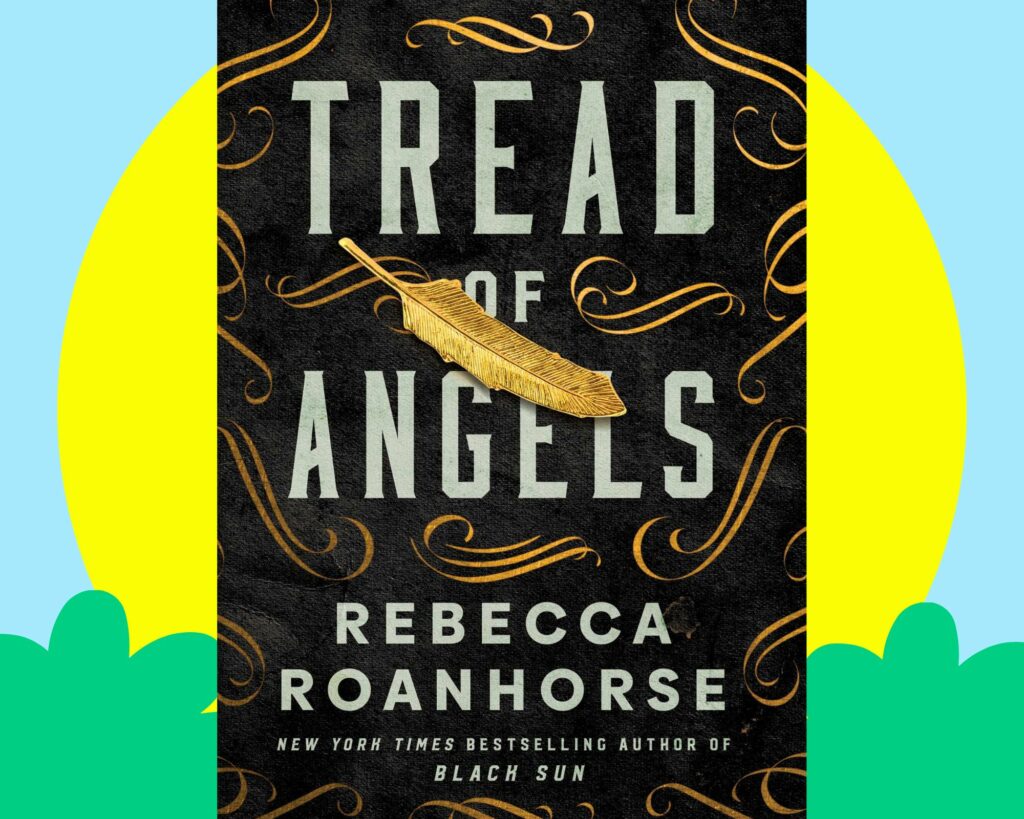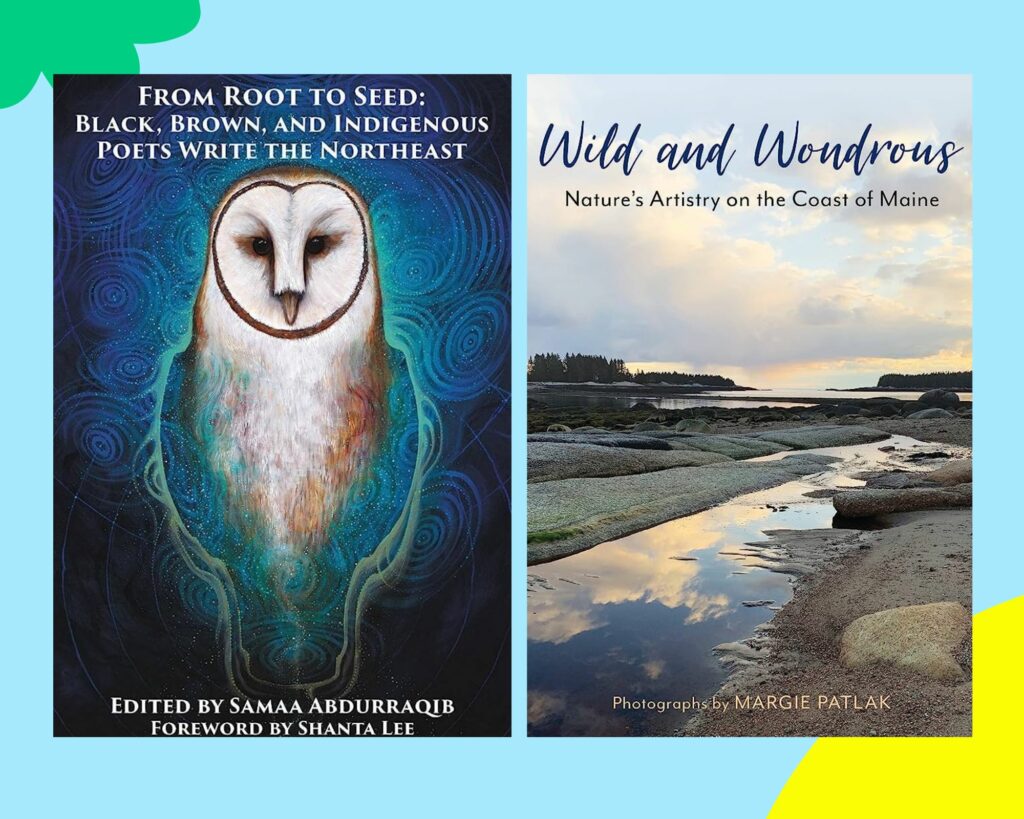A Career in Books: Summer Staff Picks
Our library staff shines a light on reads both sunny and serious—in keeping with this stormy season—for our summer staff picks. Read on for a wide variety of children’s books, adult fiction and nonfiction. Be sure to place your holds on Sparrow Being Sparrow by Gail Donovan (author and staff member) and check out summer reading for kids and adults, too!
Julia F’s Pick
After slogging through weeks of humidity and thunderstorms, it was a relief to slip into the cool desert air of K. O’Neill’s The Moth Keeper. This luminous graphic novel follows Anya, a young inhabitant of the night-village, as she takes her place as caretaker for the Moon-Moths on which her nocturnal community depends. Being the Moth Keeper is an essential role but a lonely one, and Anya will have to face her deepest fears and desires as she shepherds the Moon-Moths through the night. With a soft color palette, O’Neill depicts a joyfully diverse community of villagers; Anya’s friendship with kind, observant Estell is particularly moving.
Cindy’s Picks
David Levithan’s Answers in the Pages is the oh-so-compelling story of a middle school boy, Donovan, and the fight his mother embroils their entire town in over The Adventurers, a book that has been assigned for his 6th grade class. Two of The Adventurers‘ characters may be gay, and Donovan’s mom doesn’t feel that kids his age should read about gay characters yet. Donovan and his friends disagree vehemently and immediately begin a campaign to fight for the right to read this book and others like it. There is also a mystery alternate plotline: who is Roberto Garcia and how does he fit into the plot? You must read Levithan’s amazing story (maybe on audiobook, as I did) to find out!
Phil Stamper’s Small Town Pride is a fantastic book about Jake, his middle school’s first openly gay kid. After he comes out to his parents, in an effort to be as accepting as possible, his father hangs an enormous Pride flag outside their house, outing Jake to the entire town. Some people are worried that the flag will lead to something “truly outlandish: a Pride parade!” Jake doesn’t think that is a ridiculous idea and begins working with his friends to try to bring a parade or Pride festival to his small town. His next-door neighbor, the mayor, doesn’t agree. Jake’s story is touching, funny, and heartbreaking at times: “My eyes turn back to the window. How do people in cities, or even in the suburbs, zone out when they need to think? Do the skyscrapers all blend together, the people? There’s nothing like staring out at the fields, hoping the answer pops through like summer corn.”
My final offering is a book I haven’t read yet, but also on the Maine Student Book Award List for this year: Different Kinds of Fruit by Kyle Lukoff: “Annabelle begins to realize how labels she thought were fixed—same, different, boy, girl, gay, straight, and even fruit and vegetable—aren’t so clear cut after all.”
Emily’s Picks
Sometimes I find myself drawn to books that have similarities, subtle or more overt. I recently realized I’d read several books about fairies that played with the ideas of immortality, dangerous bargains, and made for excellent fantasy reading.
It started with Emily Wilde’s Encyclopedia of Fairies. Emily is a professor trying to make a name for herself in a field full of men by publishing the first complete encyclopedia of fairies. She sets off for an expedition to the wintry north, only to have her flighty rival, Wendell Bambleby, follow her and in no time at all charm all the wary townsfolk and shove right into her life. I loved that the story’s told from the perspective of Emily’s field notes, with all the detailed descriptions of their treks into the snowy mountains and the dangerous fairy realm.
Olivia Atwater’s Half a Soul also deals with the world of fairies and the dangers it holds for mortals. Theodora had her soul stolen away when she was a child — at least, half of it, until her cousin stabbed the fairy with iron scissors. Most people find her odd, with her seeming lack of any emotions and inability to show fear, and her aunt struggles to find her a suitable match. When she and her cousin travel to London and she meets the chaotic and impressive Lord Sorcier of England, he sees her as a puzzle to solve, and she’s drawn into his world of magic. It was a fascinating story full of Regency style drama and intrigue, romance, pointed critiques of capitalism, and dangerous magic.
More fairies and magical beings can be found in the graphic novel Life of Melody, starring a fairy godfather and a beast man raising a human baby together; T. Kingfisher’s unsettling, adventurous, and absolutely charming Nettle and Bone; and Mia Tsai’s Bitter Medicine, where a Chinese immortal and a French elf find themselves drawn together despite the considerable risks.
Elise’s Picks
Summer is time for wildflowers! Some people may call them weeds, but I prefer the description of “flowering plants that grow without human intervention.” I’d like to recommend everyone take a break to appreciate these ephemeral beauties of summer, and for those who want to get to know them better, the library has books that will help!
A nice sized guide for a hiking backpack is Wildflowers of Maine, New Hampshire, and Vermont in Color by Bessette and Chapman. It’s easy to find the flower you are looking for, since the guide has them organized by color, symmetry and number of petals. Examining the placement and shape of the leaves will narrow down your options, and then it’s just a matter of comparing the images until you find your plant.
If you are interested in cultural history and lore of wildflowers I found Jack Sander’s Hedgemaids and Fairy Candles to be an interesting read. Amongst other things, the book talks about Linnaeus’s Floral Clock and what insects might be attracted to which wildflowers.
If you are willing to patiently wait for a Maine Cat book to arrive, my absolute favorite wildflower guide is Wildflowers of New England by Ted Elliman. It has photos of ~1000 different species (my earlier suggestion comes in at about ~400 if you are considering pack weight) but also is fairly easy to use. Elliman’s book also shows which plants are native to our area, and which ones have travelled here, with a note saying where they could originally be found. I especially like the endpapers that name the different structures of flowers and leaves. Hope you find a new way to enjoy some of the plants in your neighborhood!
Julia B’s Pick
I found this book in San Francisco when I lived there: Pigeons: The Fascinating Saga of the World’s Most Revered and Reviled Bird. My favorite story in the book was about a pigeon used in WWI by the French to send messages over enemy lines. Injured in battle, the pigeon still flew many miles to deliver an important message and it lived for years after.
Arwyn’s Pick
I don’t know if angels count as a “mythological being” (I’m pretty sure they do???) but for PPL’s 2023 Reading Challenge #6, I recommend Tread of Angels by Rebecca Roanhorse. It’s a western dystopian that follows a half-angel trying to absolve her fallen sister of a murder she’s accused of committing. A bite-sized novella, the story can be finished in one long day on the beach. (The subject matter isn’t sunny though, so it might not be a great beach read—but you could do it!)
This summer I’m not really traveling anywhere outside of the state, so I’ve been browsing some interesting travel books. Sarah Baxter’s Cinematic Places showcases famous film locations. These aren’t just all in the US, there are international locations from Scotland where The Wicker Man (the original with Christopher Lee, not the one with Nic Cage) was filmed all the way to the Outback for The Adventures of Priscilla, Queen of the Desert. Another highlight was Dead Horse Point State Park where Thelma and Louise drove into the canyon. (I bet, like me, you thought that was the Grand Canyon. It’s not, that was Utah). A great, quick read when you need an adventure away from home, complete with film facts and some gorgeous illustrations by Amy Grimes.
The next title I’m recommending is a book that I know has been in the works for several years. A few years ago, PPL hosted hiker and writer Carey Kish. At that point he had still been researching the trails and breweries for his book, Beer Hiking New England. Carey is just as knowledgeable about his beers as he is about hiking trails. If you’ve picked up a copy of The Maine Mountain Guide, you’ll know how detailed Carey is. From the top of Maine down to the bottom of Rhode Island, Carey has found trails and breweries to visit after a hike. A great pick for any beer and hiking lover.
Lastly, I’m a fan of pub quizzes but don’t always like going to bars. This summer I’ll be hosting a pub quiz on my couch. Most likely with just my cats, but it will be hosted. I’ll be using The 80’s: the Ultimate Book of Trivia. We’ll be learning what 24-hour show launched in June of 1980 (CNN was launched as a 24-hour news channel), and who had so much passion for the seas that they directed The Abyss (James Cameron). Like it says on the back of the book, this “is the ultimate chance to show your friends how, when it comes to 80s trivia, nobody can put YOU in a corner.”
Elizabeth’s Picks
If you told the story of somewhere significant to you, where would that somewhere be? My summer reading list is full of places in the world with a hold on the writer’s (and reader’s) attention. From the Pacific coast: Swim Home to the Vanished by Brendan Shay Basham. From the Mexico-U.S. border: Rivermouth: A Chronicle of Language, Faith, and Migration by Alejandra Oliva. From Sudan and South Sudan: Leila Aboulela’s River Spirit and Fatin Abbas’ Ghost Season. From Appalachia: Tar Hollow Trans by Stacy Jane Grover and Another Appalachia by Neema Avashia. Here in the Northeast, the anthology From Root to Seed: Black, Brown, and Indigenous Poets Write the Northeast edited by Samaa Abdurraqib. And Maine’s spilling-over natural beauty caught in Wild and Wondrous: Nature’s Artistry on the Coast of Maine by Margie Patlak.
A Brooklyn apartment sets the scene for the stories of three friends (and roommates) in Kate Gavino’s marvelous, mesmerizing graphic novel A Career in Books. I would happily read more books about Nina, Shirin, and Silvia just talking with each other as they figure out what they really want in life—here, as they navigate the world of low-paid NYC publishing positions but also mull over lessons learned from Veronica Vo, a mysterious 92-year-old writer who lives in their building. I was pulled in by the dialogue’s wit and heart, the trio’s rock-solid friendship and endless willingness to support each other over duck buns and cake, and the somewhat niche humor (who knew a Marilyn Robinson reference could make me snort-laugh?). Gavino’s illustrations are satisfyingly, soothingly intricate, a trove of funny details and hidden gems. If you missed A Career in Books last year, snag it now!
Eileen’s Pick
I am foursquare in favor of light summer reading, don’t get me wrong. But long days and delayed nightfall sometimes lend themselves to somber reads that shorter days simply don’t allow enough light to tolerate. When an article in The New Yorker (May 11, 2023) highlighted Anne Berest’s novelized rendering of her Jewish family’s experience in Palestine and Europe and their fates as the carefully choreographed Nazi noose tightened, with the longest days of the year just a few short weeks away and some trepidation I put myself on the hold list for The Postcard.
I am reading it now.
Separating fact from fiction is challenging in this rigorously researched novel, and perhaps need not be done at all. In the hunt for the truth behind the mysterious, ambivalent (and, yes, real) unsigned postcard received by the author’s mother in the early 2000s listing four names, each one a family member murdered at Auschwitz, the human factor is very much alive, the history both notorious and nearly erased from first-person memory. Serendipity, coincidence, detective work, a trove of family letters and diary entries, handwriting experts, cold calls and door knocking— all kicked off by the realization that the same irrational fear of otherness still touches lives generations later, in great-grandchildren. Long after we should know better, should know by heart the lessons so painfully learned, should know that there is no excuse left for the ignorance that causes horrific harm and pushes us to deny the humanity of our brothers and sisters.
Ephraim
Emma
Noemie
Jacques
Who sent the postcard? That mystery has yet to be solved, with about 150 pages to go.
There are other mysteries, of course, like the mystery of how anti-Semitism (among so many other intolerances) can flourish, why we keep falling into the abyss that fear creates around difference, religion, ethnicity. Why do we choose to react with resentment and anger rather than curiosity and acceptance? How do we know when to say “Enough”?
And, having found that the time is now, can we find the courage to say it?
Becca’s Picks
I’m almost done reading The Great Transition, an excellent book by local debut author Nick Fuller Googins.
Emi, a teen living in northern North America, has heard her parents talk about The Great Transition for her entire life. It’s been a few decades since the time when government and industry began to tangibly act to salvage ecological balance. Most of this work fell to average citizens, who could enlist in one of various environmental corps working toward a common goal: adaption to climate change. The Great Transition was full of death and destruction, but it was also a time of technological ingenuity, deep working-class solidarity, and celebration of life.
On the holiday marking The Great Transition, worldwide celebrations are rocked by violent deaths. It appears the attacks were coordinated to target “climate criminals” who drove environmental destruction before The Great Transition and continued to profit after pivoting to cleaner energy. Emi’s mother—who is not shy about her criticism of climate criminals—has also gone missing. Are these events connected? Law enforcement think so, and Emi and her father quickly travel to New York to find Emi’s mother and learn the truth.
The Great Transition is hopeful but is not naive. We jostle for power, we struggle, and we fail in many ways. We also love each other, we celebrate, and we eat pizza and watch reality television. While this book is speculative in nature, it feels like one of the most realistic and relatable stories about one possible future.
If you like ecological fiction but are feeling the burn of this somewhat depressing genre, I highly encourage you to check out this well-paced and engaging book. (It’s gotten quite a bit of early buzz…believe the hype!)
Vicky’s Picks
As I look at the widening gulf in our community between those with means and those without, I begin to despair, which is perhaps why I found the unbridled anger in Matthew Desmond’s Poverty, by America so bracing. In it, the MacArthur genius and author of the Pulitzer Prize–winning Evicted lays bare the reality that too many of us like to ignore: American prosperity structurally depends on an underclass. It is not only under- or uncompensated labor that enables the wealthy to grow wealthier, but mechanisms such as banking fees levied on depositors with low balances and exorbitant rates charged for phone calls from prison that treat poor Americans as just one more resource to suck dry. Then there’s the U.S. tax code, which extends unearned government aid to every homeowning American who takes a mortgage-interest deduction, leaving the immiserated poor and their advocates fighting for the scraps. It’s both an indictment and a call to action for readers who are implicated in the system—which is to say, the rest of us. Desmond writes: “Becoming a poverty abolitionist entails conducting an audit of our lives, personalizing poverty by examining all the ways we are connected to the problem—and to the solution.”
A Spectre, Haunting by China Miéville makes for an excellent follow-up read. The title refers to the first sentence of The Communist Manifesto, a treatise, Miéville argues, that is as relevant now as upon its first publication in 1848. His disquisition both introduces the Manifesto to readers who may be unfamiliar with it (it’s also reprinted in full in an appendix) and wrestles with the conversation that’s taken place around it over the last 175 years. If you’re an English major like me, it’s as interesting for its close reading of Marx and Engels as it is for its ideas about social and economic rupture. Like Poverty, by America, it’s enraged. Miéville exhorts us: “We should hate this hateful and hating and hatemongering system of cruelty, that exhausts and withers and kills us, that stunts our care, makes it so embattled and constrained and local in its scale and effects, where we have the capacity to be greater.”
Let us be greater.
As always, thank you for reading.
If you’re wondering what local writers are reading this summer, the Maine Humanities Council shares summer reading suggestions from ReadME authors Morgan Talty and Meghan Gilliss.
Looking for more reading ideas? Try our Your Next Great Read service for children, teens, and adults or reach out to us at readersadvisory@portlib.org for a personal booklist of reading ideas tailored to your interests.
posted: , by Elizabeth
tags: Library Collections | Recommended Reads | Adults | Seniors | Readers Writers

